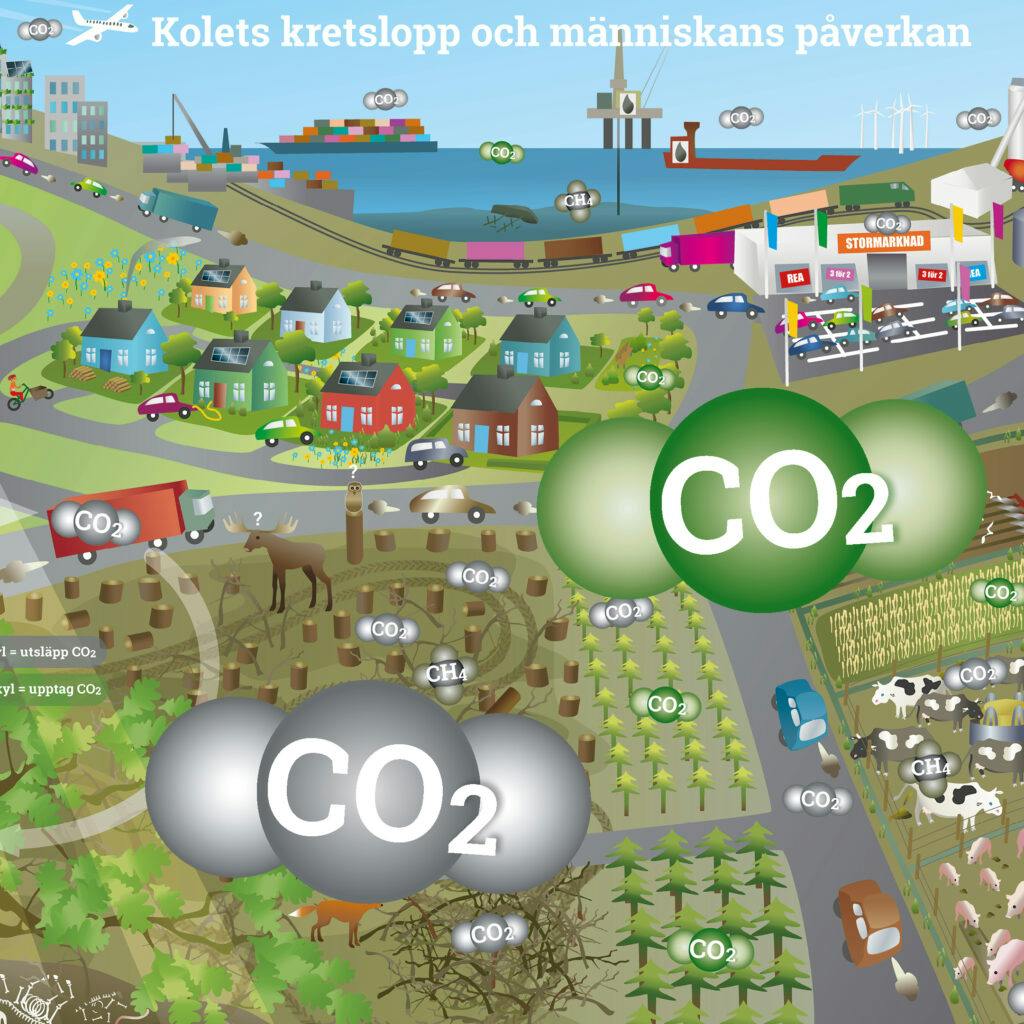Time: 1 lesson.
The goal of this lesson is for the pupils to freshen up their knowledge about the long and short cycles of carbon. The lesson covers human impact on nature, both locally and globally, as well as how to promote sustainable development on an individual and societal level.
During the lesson, pupils gain knowledge of biological and chemical concepts and their associated models of explanation. They also get to reflect on how human behaviour and natural biological and chemical processes are connected. The lesson can be used within a specific subject or as a basis for an interdisciplinary collaboration.
Lesson plan:
- Show the illustration of the carbon cycle without any molecules. Go through the picture and explain both the natural processes and how human behaviour affects them. Base your explanation on the fact sheet The carbon cycle and human impact.
- Divide the class into smaller groups (maximum four people per group) and give each group a copy of the illustration of the carbon cycle without any molecules. Have the pupils discuss which parts of the illustration contribute to the uptake of carbon dioxide and which contribute to emissions. For a more complex exercise, you can also let them think about which parts of the picture contribute to methane emissions.
- Ask the pupils to write on the picture where they think absorption and emission respectively take place. Alternatively, you can project the image on a wall and ask the pupils to cut out the molecules during the review. The group can then discuss together where the different molecules fit in and put them up on the image projection with glue or tape.
- Finally, show the version of the illustration with the molecules and correct the pupils' answers. Discuss any questions they might have.
Tip!
Use the Panorama tool to see how much of Sweden's total greenhouse gas emissions are accounted for by different sectors of society. The tool has been developed by the Climate Policy Council, the Swedish Environmental Protection Agency and the Swedish Energy Agency and also provides suggestions on how the various sectors' climate impact can be reduced.
